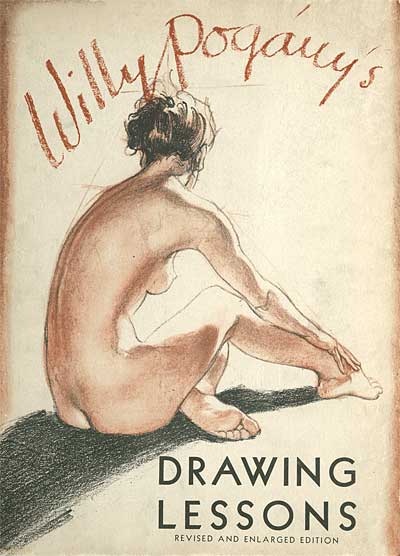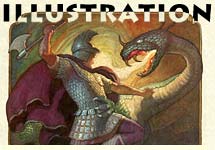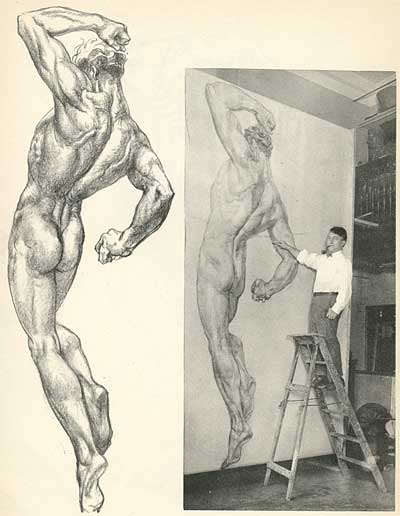
Willy Pogany was one of the most important book illustrators and designers of the first half of the 20th century. His Rime of the Ancient Mariner and books based on Wagnerian opera are masterpieces, to say nothing of his editions of Mother Goose, Alice in Wonderland and Faust. While other illustrators were confining themselves to an occasional tipped in plate buried among page after page of identical text blocks, Pogany broke the mold, designing elaborate pen and ink illustrations that surrounded the text, ornate capitals for the beginning of each page and calligraphy that turned the words into art. He is probably the artist most responsible for establishing what we think of as modern children’s book illustration.
He was also an author and teacher, with three books covering drawing, oil painting and watercolor. Today, I am presenting two sections from his book Willy Pogany’s Drawing Lessons. The first is titled…
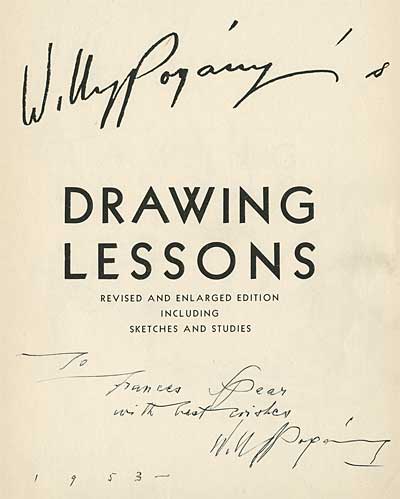
One of the most fascinating subjects to draw is the human figure. The fine proportions, beautiful modeling and delicate balance, and the infinite variations in movement and repose are such that there is no other living thing to compare with it. Through countless ages artists of all races have drawn, painted and modeled the human form.
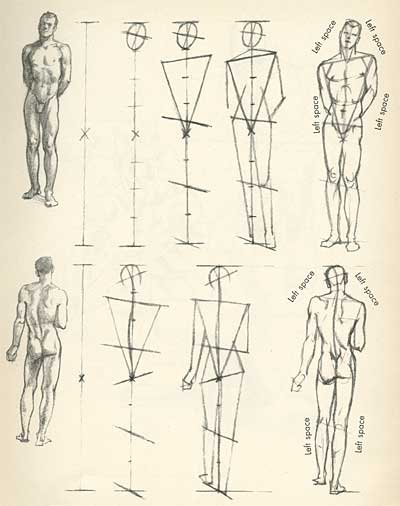
If you have never done any figure drawing, I would suggest that you start to draw the human figure in its simplest pose with little or no foreshortening. This is an upright standing position with arms close to the body and feet together.
Make up your mid before you begin, how large you want your drawing to be and mark on the paper the total length desired. Your drawing must be exactly the size that you have indicated on your paper.
Your next step is to draw a straight vertical line connecting the two marks. This will indicate the imaginary line of gravitation running from head to foot.
Now mark the center of the body by dividing the vertical line into two equal parts. Mark your proportions.
Draw in the oval of the head.
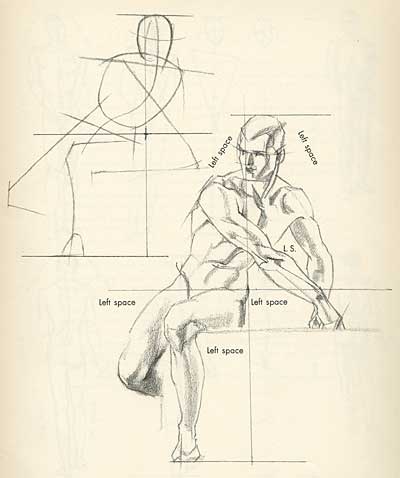
Measure the width of the shoulders compared to the length of the body. Draw in the shoulder line. Do the same with the hips.
To measure, use a pencil in your outstretched hand, first getting the width, then measuring vertically the number of times the width goes into the total length of the body. Now proceed to draw the masses of the chest, hips, legs, etc.
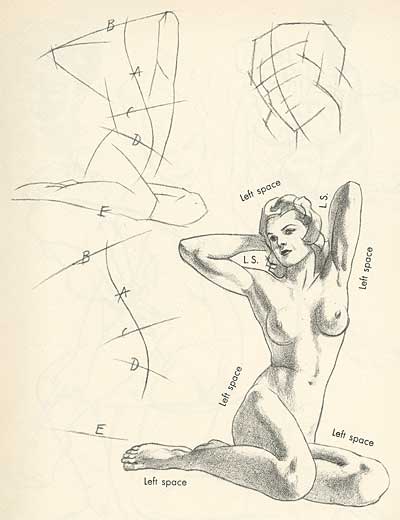
To check on your drawing, watch the shape of the background that surrounds the figure. See if these "left spaces" (or negative shapes) correspond with the outline of your drawing.
For instance, whatever the position of your subject, watch the shape and size of the space between the arms and the body; between the tilted head and the shoulder; between the two legs, etc, etc.
These will be your left spaces. Special attention to them will be of great help in making a correct drawing.
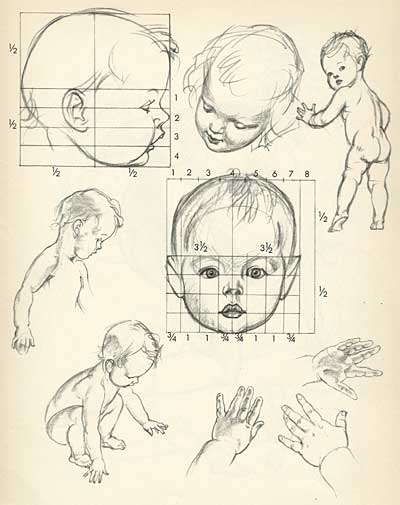
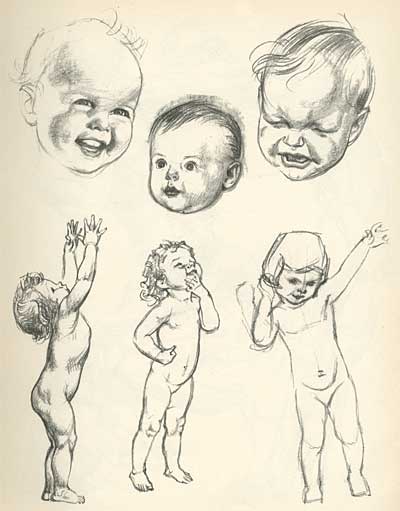
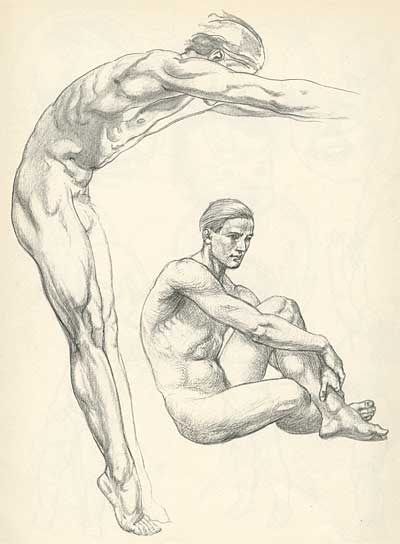
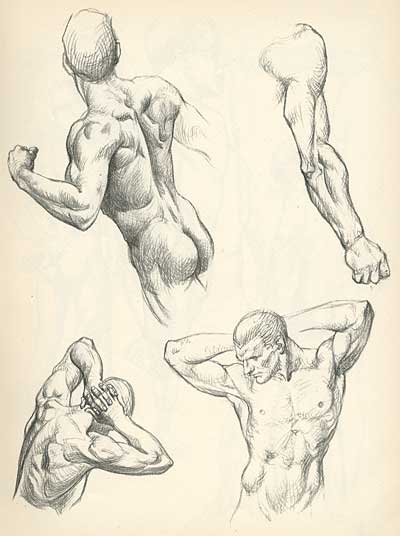
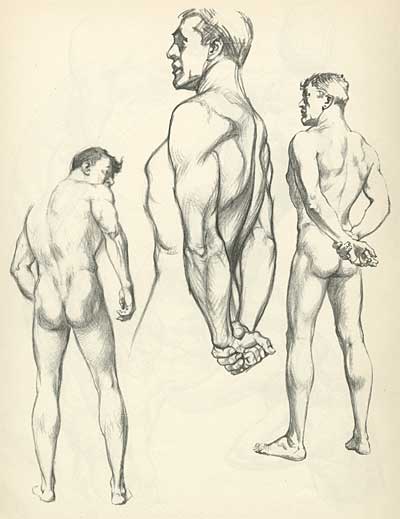
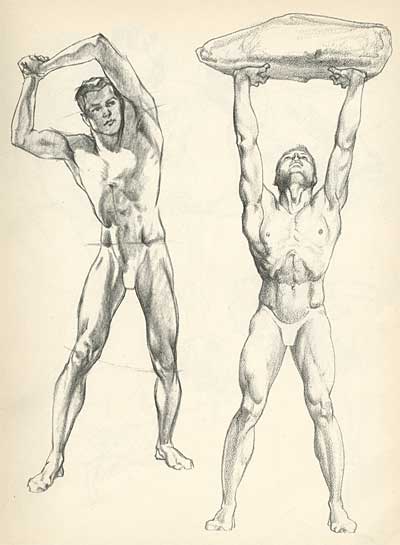
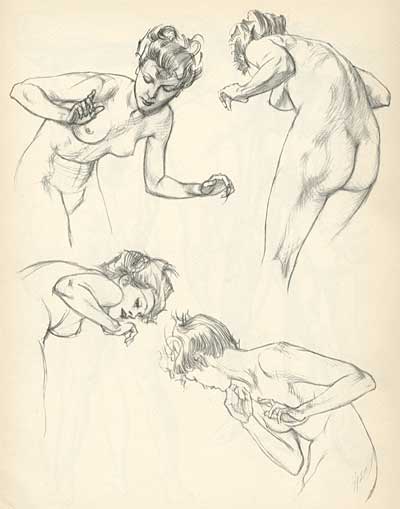
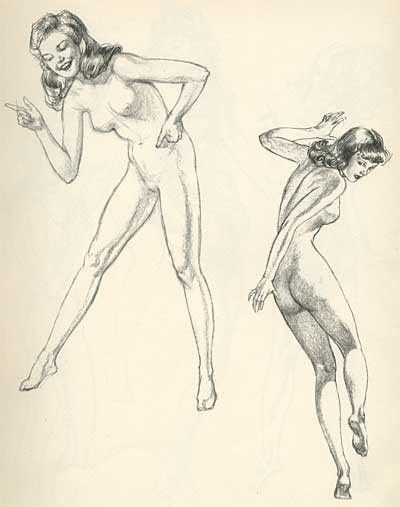
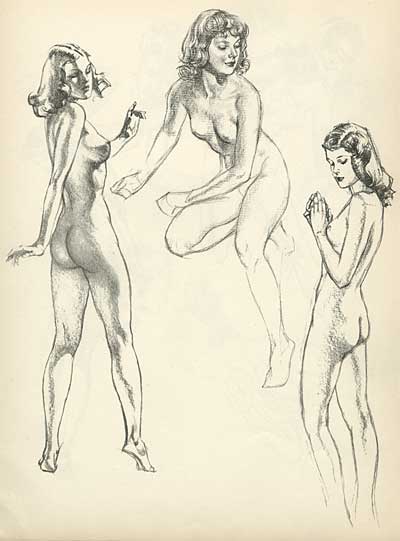
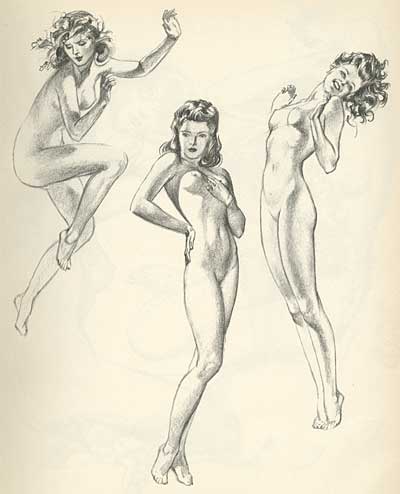
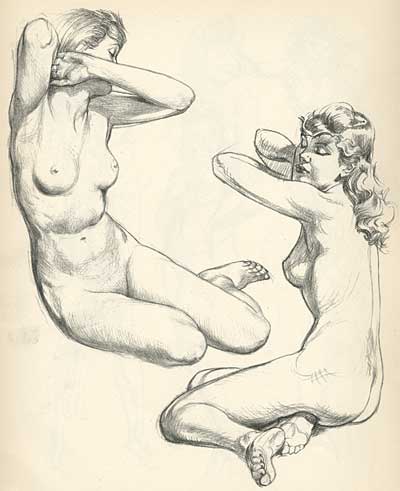
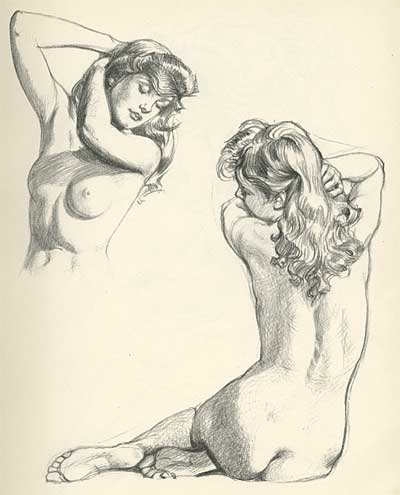
Cartoons are about things that aren’t real- pure imagination. But even here, it’s important to have balance… A friend of mine, Louise Zingarelli once told me, “You can’t draw crazy things until you can draw perfectly straight. Wonky perspective all over isn’t weird or interesting- it’s just ugly and dumb. You’ve got to have both, working right against wrong… just like working warms against cools in colors." The second section of the book we are presenting today illustrates these points.
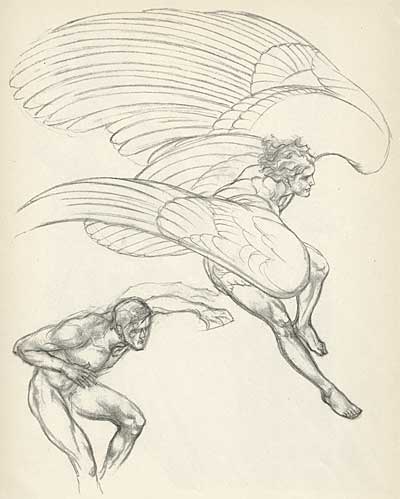
Willy Pogany was a children’s book illustrator who specialized in fantasy subjects. At the end of the book, after the lessons, he presents a selection of his work sketches. Pogany was particularly eloquent, with a huge library of shapes and forms in his head. He also had an amazing sense of balance- making the fantastic seem real. This is truly great draftsmanship.
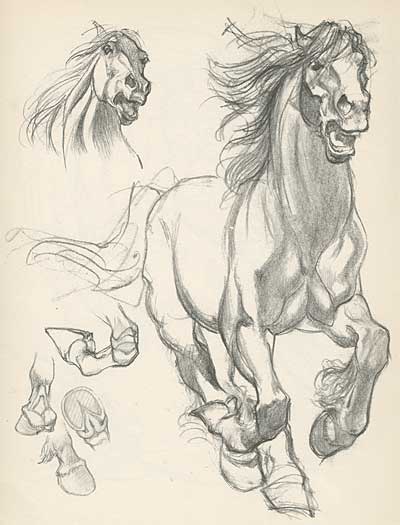
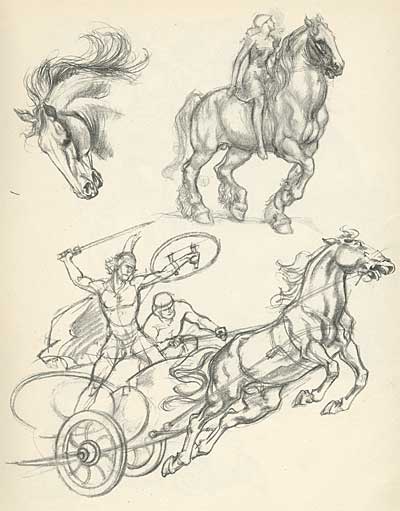
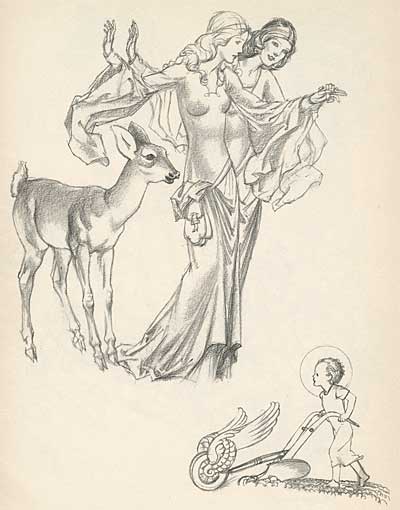
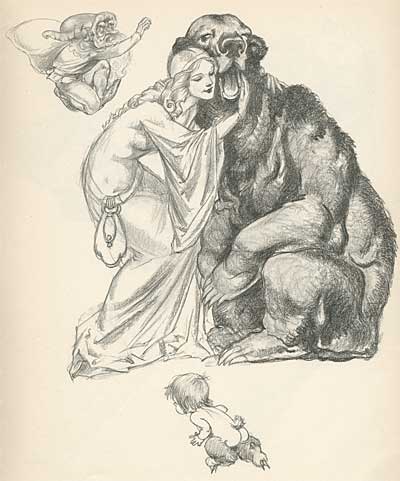
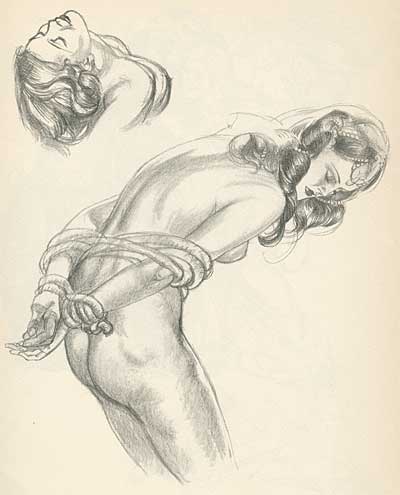
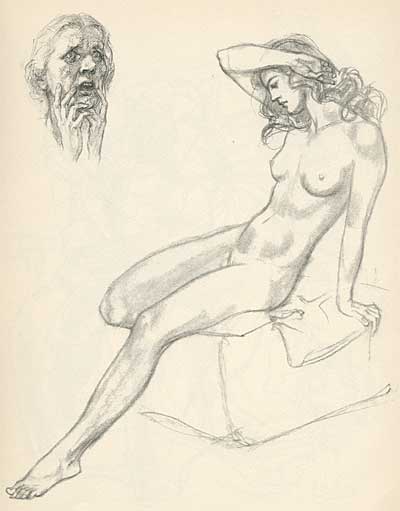
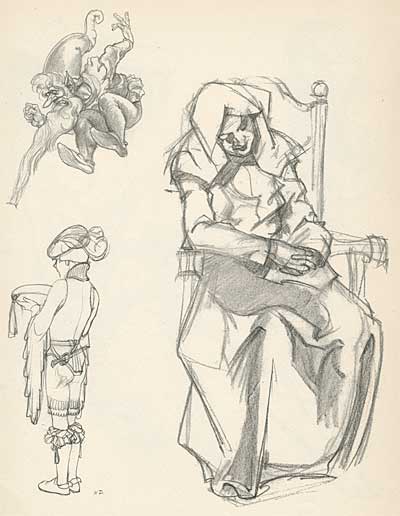
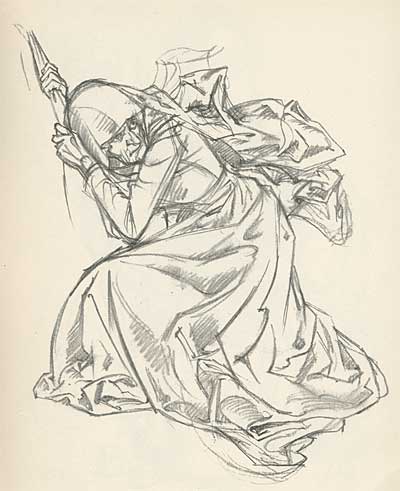
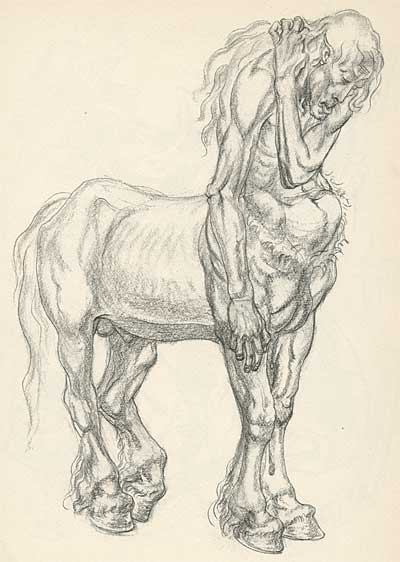
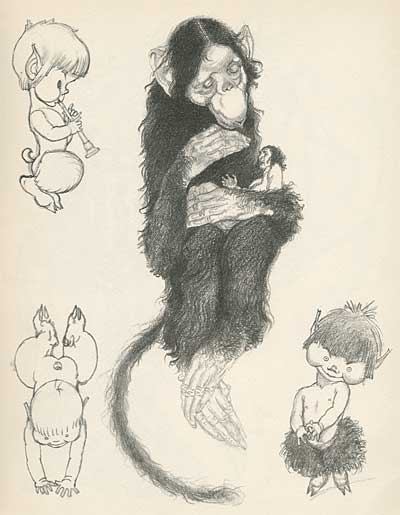
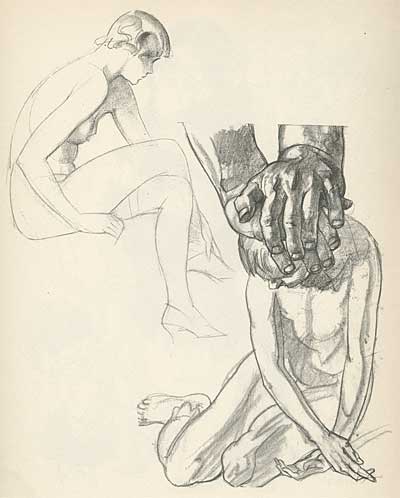
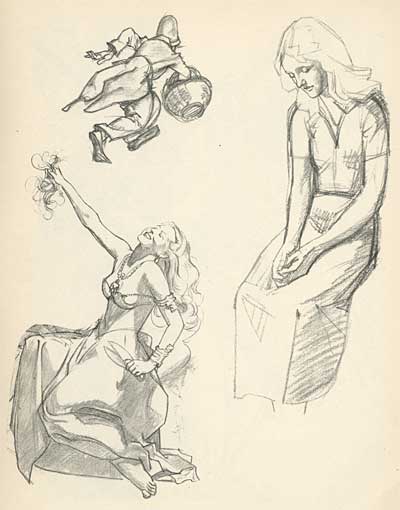
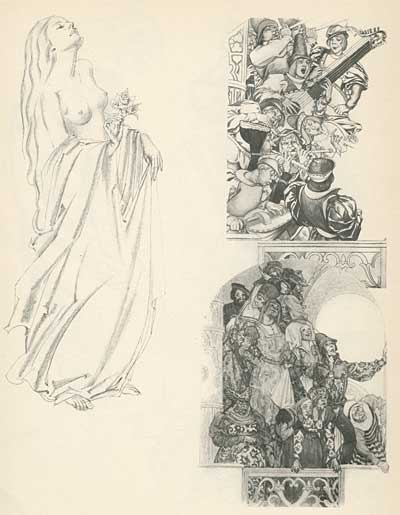
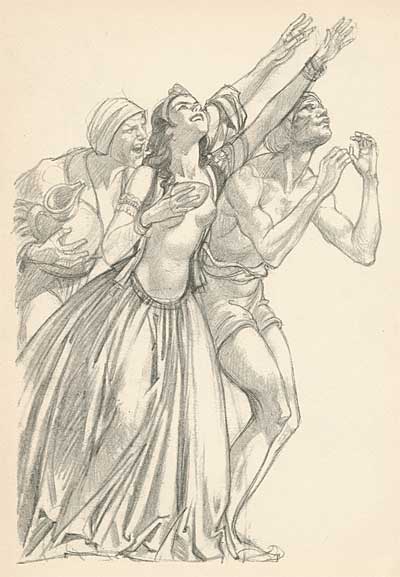
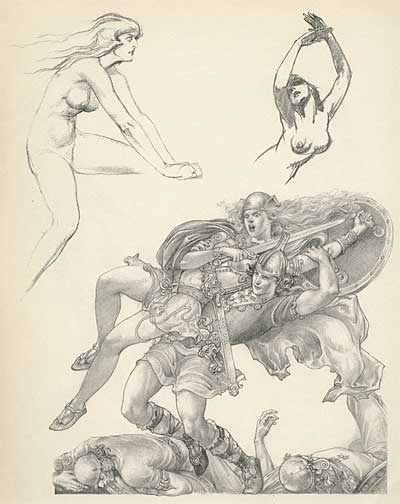
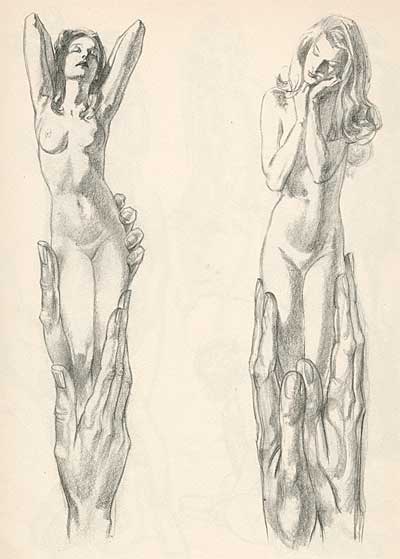
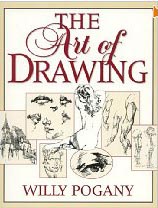
Drawing is a language, and it requires building a vocabulary to be eloquent. Students should carry a sketchbook with them wherever they go and draw everything they see- from people’s heads in a late night coffee shop to fireplugs on the street. Everything you draw becomes part of your dictionary of imagery in the future.
Pogany’s classic drawing lessons are still in print under the title, “The Art of Drawing”. Pick up a copy at Amazon for your reference library.
Stephen Worth
Director
Animation Resources
This posting is part of an online series of articles dealing with Instruction.
This posting is part of a series of articles comprising an online exhibit spotlighting Illustration.















